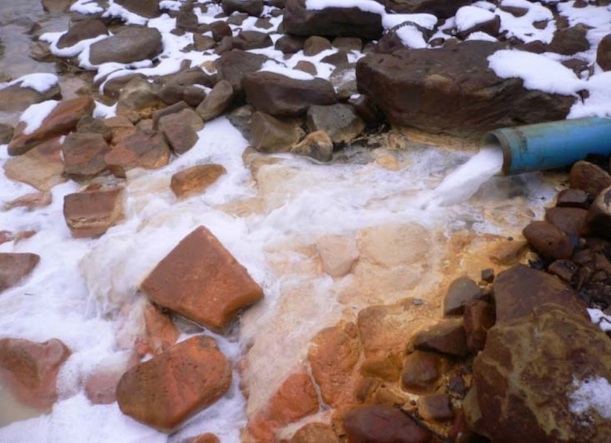October 2, 2013
Radioactive Wastewater From Fracking Is Found in a Pennsylvania Stream

New testing of treated wastewater from fracking shows that it contains high levels of radioactive radium, along with chloride and bromide. Image via Environmental Science and Technology/Warner et. al.
In the state of Pennsylvania, home to the lucrative Marcellus Shale formation, 74 facilities treat wastewater from the process of hydraulic fracturing (a.k.a. “fracking”) for natural gas and release it into streams. There’s no national set of standards that guides this treatment process—the EPA notes that the Clean Water Act’s guidelines were developed before fracking even existed, and that many of the processing plants “are not properly equipped to treat this type of wastewater”—and scientists have conducted relatively little assessment of the wastewater to ensure it’s safe after being treated.
Recently, a group of Duke University scientists decided to do some testing. They contacted the owners of one treatment plant, the Josephine Brine Treatment Facility on Blacklick Creek in Indiana County, Pennsylvania, but, “when we tried to work with them, it was very difficult getting ahold of the right person,” says Avner Vengosh, an Earth scientist from Duke. “Eventually, we just went and tested water right from a public area downstream.”
Their analyses, made on water samples collected repeatedly over the course of two years, were even more concerning than we’d feared. As published today in the journal Environmental Science and Technology, they found high concentrations of the element radium, a highly radioactive substance. The concentrations were roughly 200 times higher than background levels. In addition, amounts of chloride and bromide in the water were two to ten times greater than normal.
“Even if, today, you completely stopped disposal of the wastewater,” Vengosh says, there’s enough contamination built up that”you’d still end up with a place that the U.S. would consider a radioactive waste site.”
